 This is Part 5 in a series of tutorials written for my students to learn how to play from chord charts and lead sheets. You can read the previous posts here:
This is Part 5 in a series of tutorials written for my students to learn how to play from chord charts and lead sheets. You can read the previous posts here:
Part 1: Introduction and stylistic function
Part 2: Basic chord voicings
Part 3: More basic chord voicings
Part 4: Altered voicings
Dear Nigel,
Hopefully you’ve started to get a feel for basic voicings and altered voicings that stay close to the middle of the keyboard. Next, let’s look at simple rhythmic patterns for the right hand.
I’ve written out our 31 hymns to demonstrate some of these patterns. But before I show you some examples, you need to understand a really important principle:
Any rhythmic pattern, no matter how tasteful, will get old if you overdo it.
Doesn’t matter how good your favorite food is: if you eat it every day, you’ll get tired of it. The same is true of rhythmic patterns. You have to mix them up or you’ll wear out your listeners. I’m showing you examples of each type, but I’d rarely advocate playing any of them for more than a couple measures without at least a brief variation.
These examples are not presented in any particular order of importance. More complex playing is not always better (in fact, it’s often worse). You can use any of these rhythmic patterns in a song – maybe all of them, at different times, if you feel it’s tasteful.
There are plenty of times when I’ll play only one whole-note chord per measure, especially if I’m playing with a band! “More” is certainly not always better.
I’m starting with right-hand patterns because the RH will typically take more of the rhythm (since it’s in a less-muddy register). Also, these examples are intentionally simple. Basic patterns will be your bread and butter; more complex or syncopated patterns will be less common. Finally, these rhythmic patterns will not change register. That means the RH isn’t yet jumping to a different octave… that’ll come later.
1. RH quarter notes
The most basis rhythmic pattern is to repeat the chord in the RH on quarters, or whatever the beat unit is:

The simplest variation of this is to mix in some half notes, so the constant quarters don’t get obnoxious:
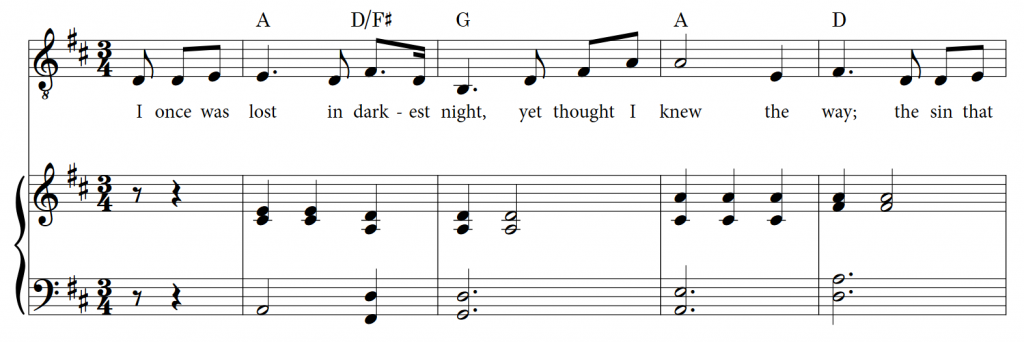
Here’s a similar pattern in 4/4, quarter-half-quarter, which is really common:
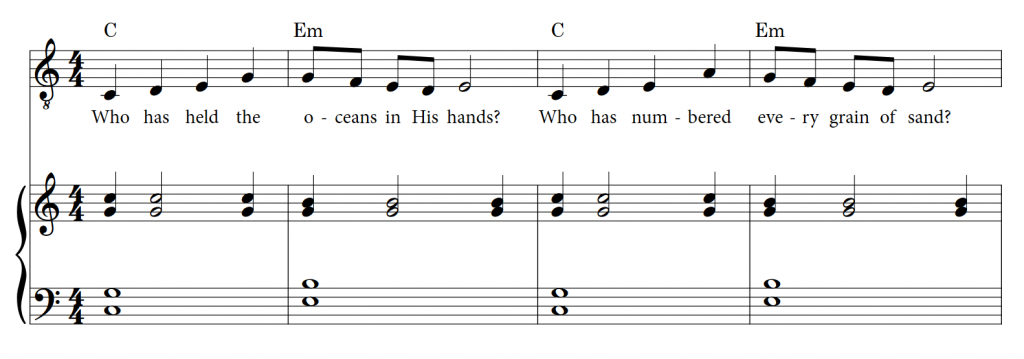
And here’s a dotted-quarter pattern in 6/8:
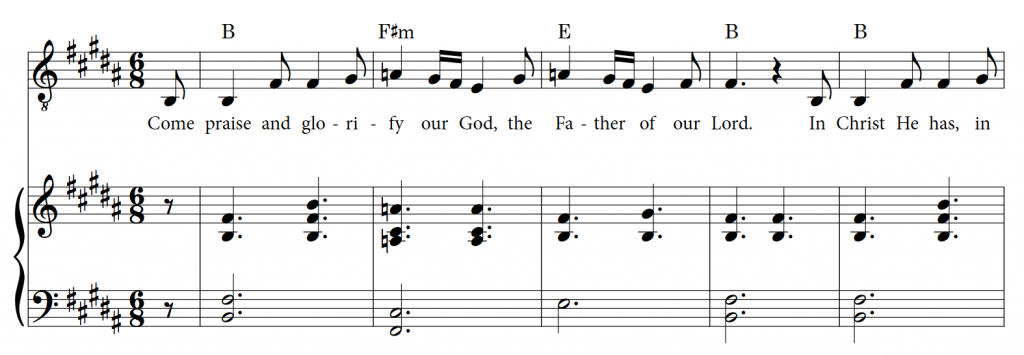
2. RH inserted eighths, chord tones
Another common rhythmic device is to add eighth-note motion to fill it in a bit more, using notes in the chord. Play part of the chord, insert an eighth, and return to the chord:

Here’s another example:
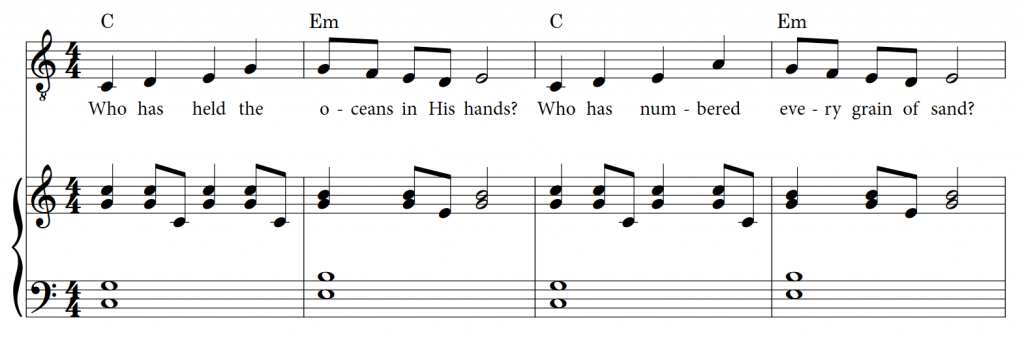
If you’re a more skilled player, you can add eighths in more complex ways. Here’s the same excerpt, but with richer eighth-note motion:
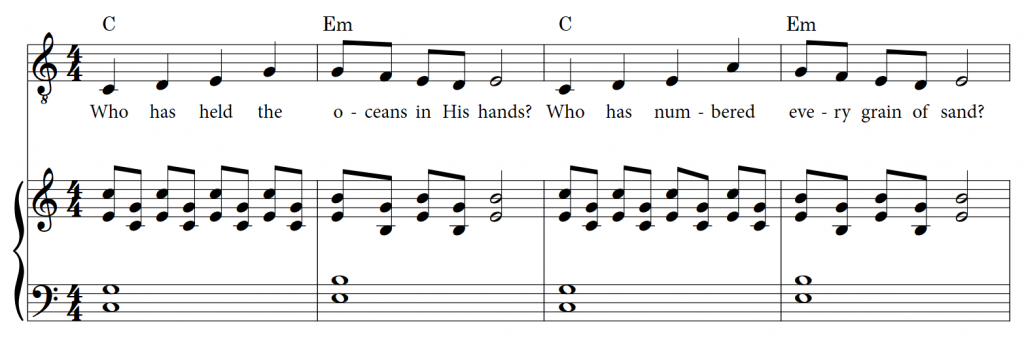
Of course, the more eighth-note motion you create, the more careful you have to be to play sensitively. Don’t pound the notes!
3. RH arpeggiated chords
You can also play the RH chords as a simple arpeggio:
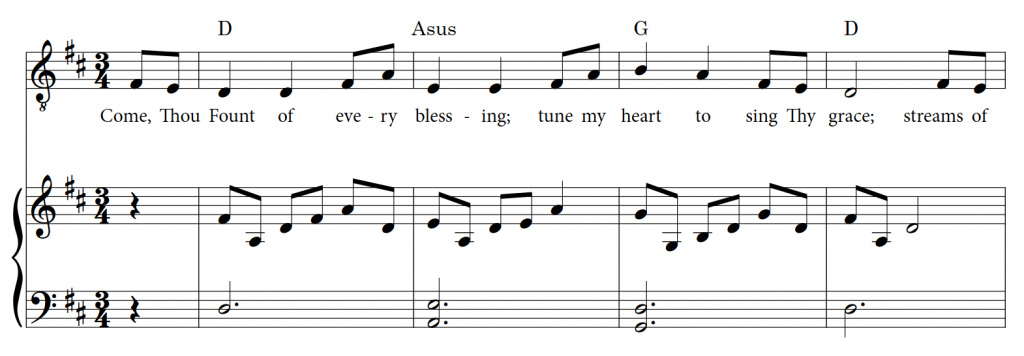
Just note that this RH motion tends to sound flowing and soft, so don’t use it if you need to create rhythmic drive.
Repeated arpeggios can sometimes create some nice, gentle syncopation:
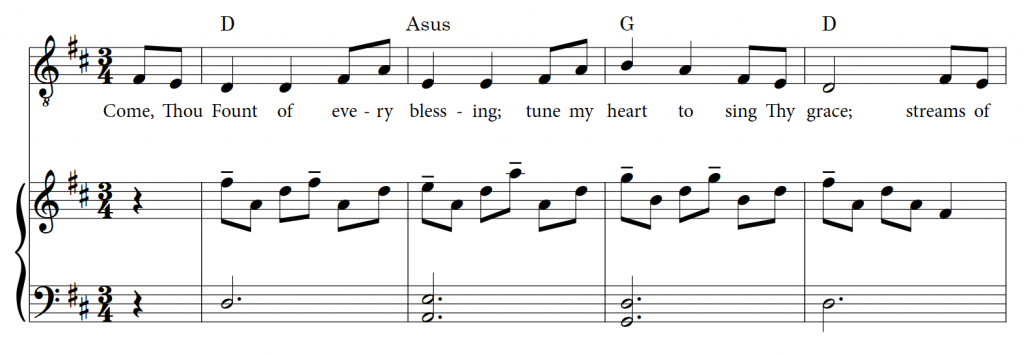
4. RH eighth motion, non-chord tones
You can add eighth notes as chord tones (as in the three examples above), or as neighbor tones. In this example, the eighth note adds a 7th to the sound, but it also provides rhythmic motion:
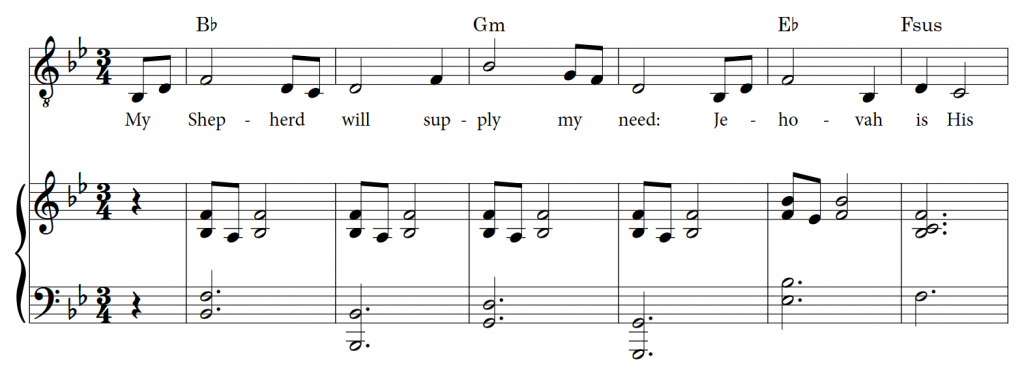
These patterns should provide you with some helpful material to apply to any lead sheet. In the PDFs below, I’ve tried to incorporate all these patterns in some form or another. The examples don’t necessarily represent exactly how I’d play these songs (since we’re still building concepts slowly), but I did try to use patterns that “fit” the style and tempo of each song. Play through the examples and work to learn the RH rhythmic patterns so you can use them yourself.
3. Basic RH patterns (31 examples)
Yours, etc.
Dan
